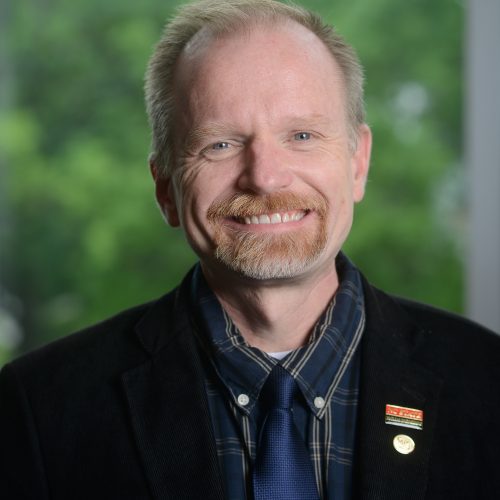Rob Hayes
Associate Professor of Nuclear Engineering, Joint Faculty Appointment with SRNL

- 919-515-2321
- rbhayes@ncsu.edu
- Burlington Laboratory 2101
- Visit My Website
Dr. Hayes’ thrust areas span nuclear nonproliferation including nuclear assay and retrospective dosimetry. He also finds health physics, nuclear crtiticality safety, burnup, shielding, nuclear waste disposal and novel detection methods of interest, particularly when they relate back to nonproliferation. Dr. Hayes is a Certified Health Physicist and a licensed Professional Engineer (nuclear) with industry and field experience in radiological emergency response, nuclear waste management, nuclear safety, radiation dosimetry, nuclear criticality safety, air monitoring, ALARA and shielding design.
Education
Nuclear Engineering
University of Utah
Physics
University of Utah
Physics
University of Utah
Mathematics
University of Utah
Research Description
Dr. Hayes' research interests include nuclear nonproliferation, radiological emergency response and nuclear waste disposal technologies which are advanced using novel hybrid approaches including radiation detection, air monitoring, luminescence and magnetic resonance coupled with Monte Carlo radiation transport modeling. His research includes luminescence and magnetic resonance techniques on free radicals created from exposure to ionizing radiation in conjunction with air monitoring technologies related to consequence assessment and emergency response. Tying all these together are novel detection methodologies which include HPGe applications for field assay coupled with low resolution detector platforms. Modeling these effects with Monte Carlo radiation transport codes to interpolate and extrapolate from measured values then allows useful predictions tied back to measurement. His background includes many years of industrial experience at a nuclear waste repository and on the federal radiological emergency response teams.
Publications
- A preliminary NASA compliant conformal coating for optimized space radiation shielding configurations and its mass attenuation coefficients
- Hanson, S. C., Xiao, Y., Charrette, R., & Hayes, R. B. (2024), PROGRESS IN NUCLEAR ENERGY, 169. https://doi.org/10.1016/j.pnucene.2024.105089
- Demonstrating a Quantitative and Systematic Approach to Reducing Excess Conservativism in Nuclear Criticality Safety Analyses
- Holyk, S. A., & Hayes, R. B. (2024, April 8), NUCLEAR SCIENCE AND ENGINEERING, Vol. 4. https://doi.org/10.1080/00295639.2024.2323866
- A thermal natural uranium breeder reactor for large and small applications with passive safeguard designs
- Hayes, R. B., & Sawyers, M. J. (2023), PROGRESS IN NUCLEAR ENERGY, 163. https://doi.org/10.1016/j.pnucene.2023.104804
- An Assessment of Heterogeneous Effects on System Reactivity for Criticality Safety Analyses with LEU+ and HALEU Materials
- Sewell, P. H., & Hayes, R. B. (2023), Nuclear Technology, 209(6), 835–856. https://doi.org/10.1080/00295450.2022.2157662
- Dose Estimation for Extravasation of 177Lu, 99mTc, and 18F
- Tsorxe, I. Y., & Hayes, R. B. (2023), Health Physics, 124(3), 217–220. https://doi.org/10.1097/HP.0000000000001653
- EVALUATION OF EXISTING PUBLIC DOSE LIMITS APPLIED TO RECREATIONAL SPACEFLIGHT
- Long, M. A., & Hayes, R. B. (2023), Radiation Protection Dosimetry, 199(5), 482–489. https://doi.org/10.1093/rpd/ncad037
- Nuclear waste Educator's workshop: What and how do we teach about nuclear waste?
- Wainwright, H. M., Powell, B. A., Hoover, M. E., Ayoub, A., Atz, M., Benson, C., … Ewing, R. C. (2023), JOURNAL OF ENVIRONMENTAL RADIOACTIVITY, 270. https://doi.org/10.1016/j.jenvrad.2023.107288
- A Novel Approach for Detection of Illicit Nuclear Activities Using Optically Stimulated Dosimetry
- Aras, E. M., & Hayes, R. B. (2022), ESARDA Bulletin - The International Journal of Nuclear Safeguards and Non-Proliferation, 64(1), 64–74.
- A Standard Model Approach to Inflation
- Hayes, R. B. (2022), Journal of Modern Physics, 13(02), 113–121. https://doi.org/10.4236/jmp.2022.132009
- A systems approach to a resilience assessment for agility
- Hayes, R. B. (2022), Systems Science & Control Engineering, 10(1), 955–964. https://doi.org/10.1080/21642583.2022.2148138
